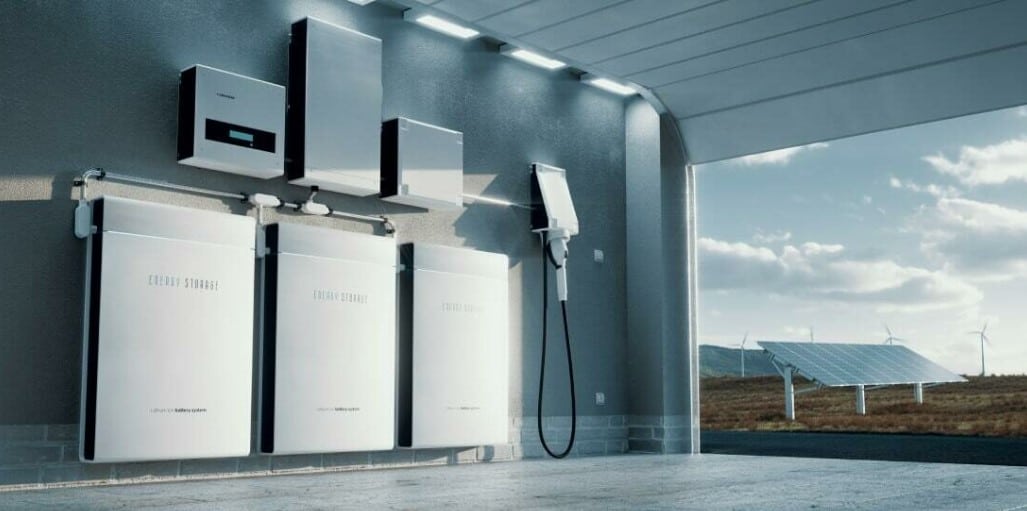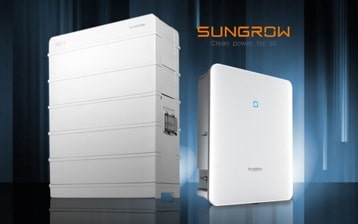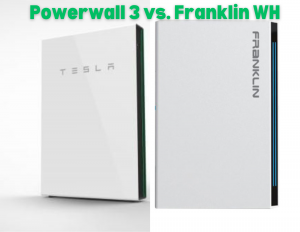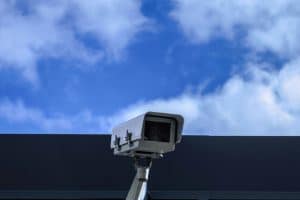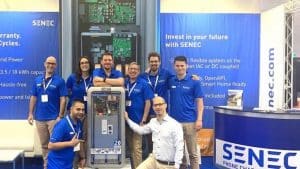On This Page
The need for solar energy storage, also known as solar batteries, is rising among many Australians as the energy sector continues to alter and develop rapidly. Finding the best energy storage solution for your house might feel overwhelming as more solar brands and models enter the market, particularly when you try to understand the ins and outs of solar battery efficiency and capacity.
For those seeking guidance without the pressure of a hard sell, Energy Matters provides a valuable resource. Consider free solar quotes, allowing you to make decisions about solar energy and storage tailored to your specific needs.
What is a solar battery?
With a solar battery storage system, you may reserve the solar energy you produce during the day for usage at night.
Most solar panel systems produce electricity during the day when many people do not require it. Instead, extra electricity might be kept in a solar battery. A solar battery is a wise purchase when connected with solar energy systems. Customers can store extra energy produced by solar panels using solar batteries. If accessible, the stored energy can be sold back to the power grid for electricity bill credits, used during periods of lower output, like at night or during a brief power outage. This procedure is known as net metering.
How do solar batteries work?
Solar batteries are installed alongside solar panels to store excess energy. It can be used as stored energy when the sun sets at night, and your panels can no longer provide your home power. Most battery storage options include an inverter for converting stored voltage to the AC voltage you need. Solar batteries also offer blackout protection. While the rest of your street may be in darkness, your home can continue to use the energy stored in the battery to power your appliances and keep the lights on!
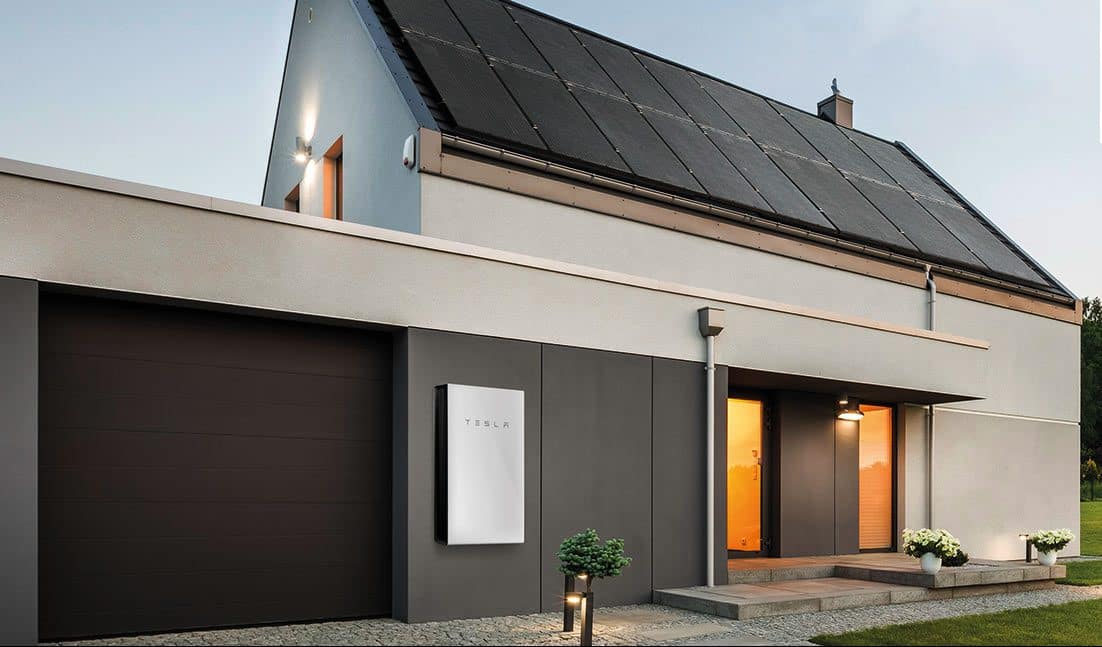
What are the best solar batteries in Australia?
1. Tesla Powerwall: Modular Powerhouse
2. sonnen Hybrid 9.53: The Efficiency Ace
3. Enphase IQ: The Seamless Solar Ally
4. LG Chem RESU: The Reliable Stalwart
5. BYD Premium LVS/LVL: The Budget-Savvy Champion
6. Sungrow SBR battery: The Versatile Contender
Remember… the “best” battery ultimately depends on your specific needs and priorities. Consider factors like budget, energy requirements, desired features, and system compatibility when making your choice.
Tesla Powerwall 2
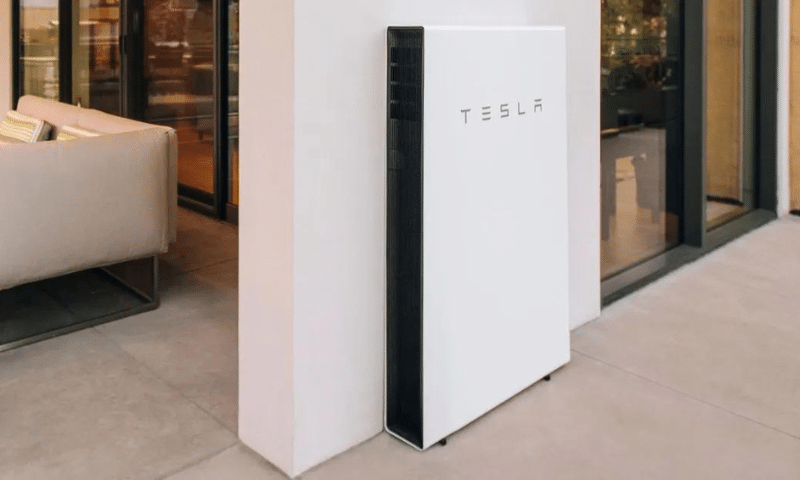
The initial Tesla Powerwall is renowned for being the battery that launched the revolution in home energy storage. However, it became popular in the early 2017 release of the Tesla Powerwall 2.
The Powerwall 2 is an AC battery system, unlike the others on the list. It has an integrated inverter charger and can be installed in any house with solar installation. To work with solar, though, it still needs a solar inverter. The price of the Powerwall 2 has dropped significantly since its launch in 2017, and Tesla is expected to release the Powerwall 3 this year.
- Type: AC battery system – Lithium NMC cells
- Size: 13.5kWh with 90% usable capacity
- Power output – 5kW continuous, 7kW peak
- Cycle life: approx 3500 cycles (claimed) – Ref warranty doc
- Price: installed cost of a Tesla Powerwall 2 costs between around $12,000 to $18,000 or more
- Warranty: 10 years to 70% minimum retained capacity.
- Compatibility: Any solar inverter (AC coupled)
sonnen hybrid 9.53
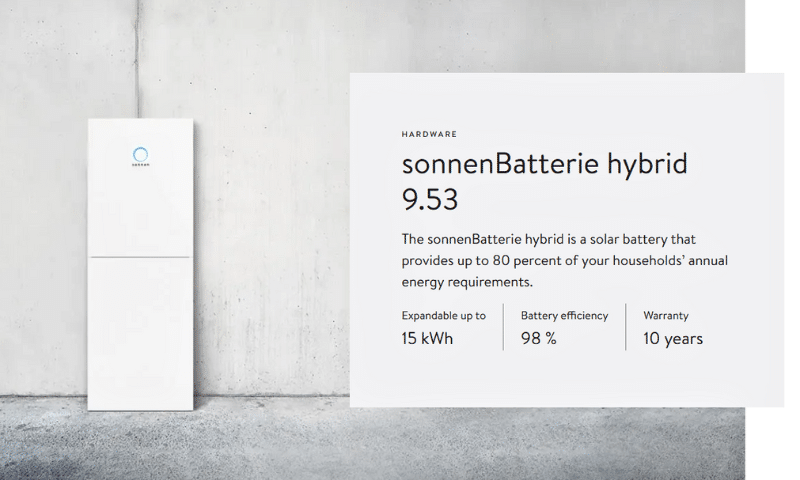
sonnen hybrid 9.53 is a lithium-ion battery that combines a hybrid inverter and a smart energy management system. Powerful output, long cycle life, compact design, multiple units connectable for increased capacity, but less widely available than Tesla.
It can provide backup power in a grid outage and participate in virtual power plant programs. It is one of the most advanced batteries, costing around $12,000-$25,000 depending on the capacity.
- Type: Lithium-ion nickel-manganese-cobalt (NMC)
- Power output: 9.2 kW continuous, 10 kW peak
- Usable capacity: 9.2 kWh
- Warranty: 10-year or 10,000 charges cycle warranty
Enphase IQ
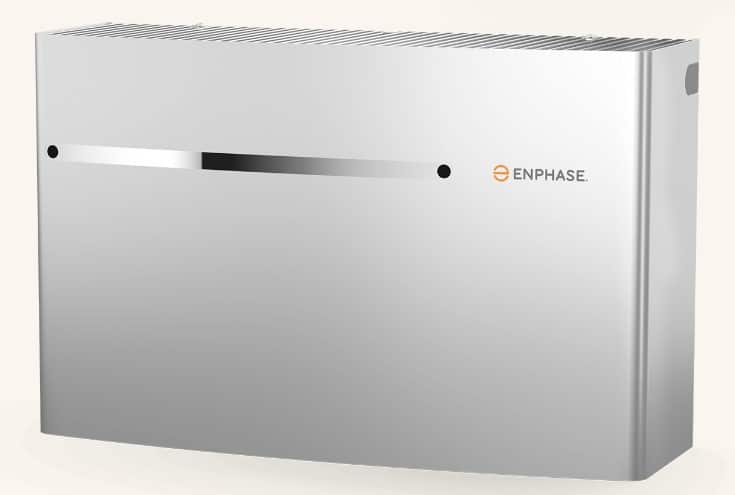
Enphase battery storage enables homeowners to try its solutions and determine what works best for them without committing to a larger, more expensive system because of its smaller size and simple integration with current systems and batteries.
The company’s well-known solar microinverter technology is coupled with Enphase IQ. Since the battery is AC-coupled, it is perfect for already installed solar systems. It can only apply to solar systems that use Enphase microinverters.
- Continuous power rating: 1.28 kW and 3.84 kW
- Depth of discharge (DoD): 96%
- Usable capacity: 3.36 kWh and 10.08 kWh
- Warranty: 10 years with an optional 5-year extension or 4,000 cycles (varies by model)
- Price: Before installation fees, the price of Enphase IQ batteries ranges from $6,000 to $9,000
LG Chem RESU
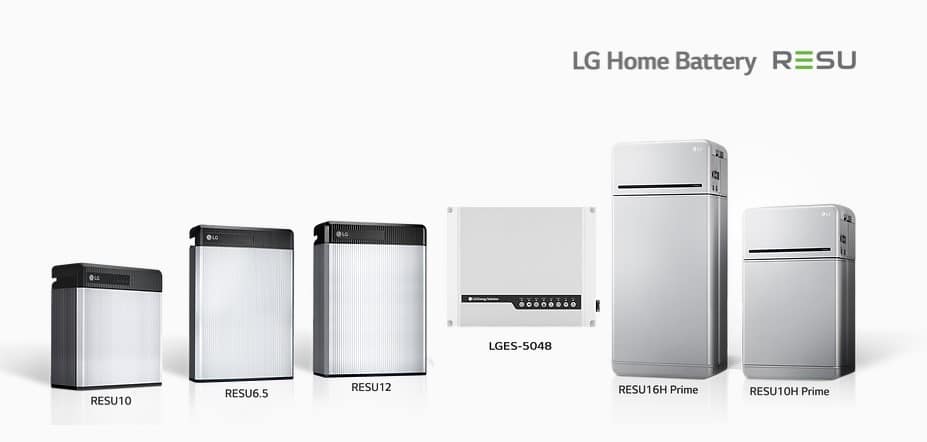
The LG Chem RESU solar battery sizes include 6.5 kWh, 9.8 kWh, 13 kWh, and 16 kWh possibilities. These batteries have a 90% DoD.
- Type: Lithium NMC cells; DC Battery
- Power Output: 7kW peak output; 5kW continuous
- Size: 9.8kWh (90 per cent usage capacity) (can be expanded to 19.6kWh)
- Cycle Life: 4000 cycles maximum
- Warranty: 10 years
BYD Premium LVS/LVL
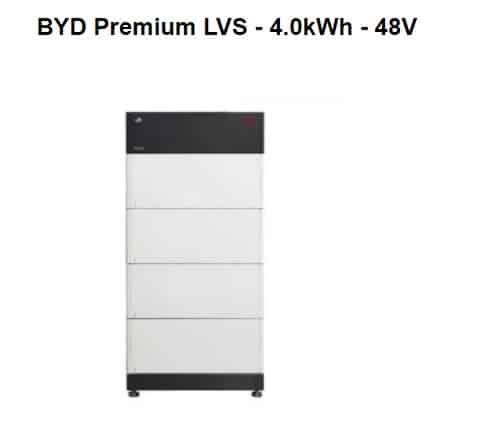
BYD batteries have a modular design, increasing size and capacity by adding more modules. This storage system is more reliable than a home seeking to transition to self-sufficiency, with the capacity to generate up to 256kWh. BYD Premium LVS batteries are also ideal for outdoor installation.
- Type: Lithium LFP prismatic cell; DC battery
- Power Output: HVS-2.5kW/module; HVM-2kW/module
- Size: HVM- 2.76kWh (100 per cent usage) (Can be expanded up to 38.4kWh)
- Size: HVS- 2.56kWh (100 per cent usage) (Can be expanded up to 66.2kWh)
- Cycle Life: 3000 cycles
- Warranty: 10 years
Sungrow SBR battery
Due to its highly affordable price and compatibility with the potent Sungrow SH-RT hybrid inverters, the recently announced high-voltage Sungrow SBR battery system has drawn much interest. Although it is still early, the new SBR series appears to quickly rank among the most widely used battery systems based on our comments and preliminary testing.
- Battery Features. 95% Depth of Discharge
- Usable Energy Capacity. 9.6kWh – 25.6kWh
- Max Charge / Discharge Power. 5.76kW – 15.36kW
- Product Warranty. 5 Year
Types of solar batteries
There are various kinds of batteries that can be used on solar systems. The term type describes the chemical content of a battery. Lithium-ion batteries are the most commonly used, but you’ve probably heard of lithium-ion batteries, gel batteries, deep cycle batteries, and many others.
The solar industry offers more than different batteries to store extra energy. Lead-acid or lithium-ion batteries are the two battery types used most frequently in home solar power systems.
Lead-acid solar batteries
Lead-acid batteries require frequent recharge and a lower depth of discharge (DoD). These battery types are uncommon for homeowners who want to use solar energy continuously.
Still, they can be a good backup option in a power outage. Lead-acid batteries come in two varieties: sealed lead-acid and flooded lead-acid batteries. While the latter doesn’t require as much maintenance as the former, the former has a longer lifespan.
What does DoD mean?
The depth of discharge (DoD) of a battery represents the proportion of the battery’s total capacity that has been discharged.
A battery’s lifespan will decrease the more it is charged and discharged. A battery should usually only be partially discharged because doing so significantly reduces the battery’s usable life. Many battery manufacturers offer a maximum DoD ideal for the battery’s performance.
For instance, if a 10 kWh battery’s manufacturer advises a maximum DoD of 80%, you should only consume up to 8 kWh from the battery without recharging. You can see why DoD is significant to take into account: a higher DoD allows you to utilise more energy stored in your battery. Nowadays, a DoD of 100% is advertised on many contemporary lithium ion batteries.
Lithium-ion solar battery
Lead-acid batteries are older; lithium-ion batteries are often lighter and smaller. They typically have a minimum lifespan of 10 years and a longer DoD. The fact that lithium-ion batteries require less maintenance than many of the alternatives is another benefit.
Lithium-polymer battery
These are similar to lithium-ion batteries. However, they are frequently more expensive and last less time. They are safeguarded against overcharging or leakage, which is a bonus.
Deep-cycle battery
These solar batteries work well to maintain a steady stream of electricity over a longer time.
Saltwater battery
These saltwater-based solar batteries are a more natural and green alternative because they use water rather than oil as the electrolyte. The lifespan of saltwater batteries is often very lengthy, and they require no maintenance.
Solar gel battery
Solar gel batteries are a wonderful choice for solar owners who travel frequently. These batteries are perfect for RV owners or anyone who want to travel with a solar battery because they don’t have to stay upright and can move around quickly.
What criteria should I compare when buying a solar battery?
Before investing in one of the many solar power options available, you need to know what you want. List some important categories to distinguish the good from the bad.
- Battery size
- Cycle life – The number of times a solar battery may be fully charged and drained before the performance starts to suffer is referred to as its cycle life. Getting a solar battery with a high cycle life is preferable to get the most out of your investment.
- Warranty – These days, a solar battery has a lifespan of about 10 years, but check for restrictions and local warranty support.
- Functionality & Efficiency – This gauges the battery’s efficiency throughout one cycle. Batteries require energy, just like many other things in your house. It implies that they will consume part of the energy they store. The percentage of electricity you can recover from the battery after using the energy it requires is known as round-trip efficiency. If a typical 10 kWh battery only allows you to draw out 8 kWh, then its round-trip efficiency is 80%. Since round-trip efficiency only considers one battery cycle as opposed to a battery’s whole lifespan, it differs from DoD.
- Cost – It is best to shop around and pick a solar battery that suits your budget because solar batteries might range in price.
- Usable storage capacity – The energy your battery can hold at once, expressed in kilowatt-hours (kWh), is its capacity. The typical solar battery has a 10 kWh capacity.
Learn more about Solar Battery Buying Guide: How to Make the Right Decision.
Benefits of utilising solar battery storage
Take your time choosing the ideal solar battery for your needs because solar panels can last up to 30 years. Your energy independence will rise, your monthly electricity bills will drop, and your solar panel system’s effectiveness will grow thanks to a solar battery.
Energy Matters has a nationwide network of trusted local installers ready to provide you with up to 3 Free Solar Quotes. Complete our quick quiz and begin your solar journey today! What’s more, Energy Matters can help you make an informed decision and the perfect option on the suitability of a solar battery with our Solar Power and Battery Storage Calculator.
Updated January 2024
Looking to save extra with solar and battery storage?
Looking to save extra with your Sungrow, GoodWe or Tesla Powerwall 2 installed solar battery*? Origin and Energy Matters have teamed up to provide customers with an additional way to save and make money!
Join Origin Loop VPP as an Origin electricity customer and earn a $400 bonus! Earn $1/kWh during peak demand by letting them draw on your battery-stored solar energy.
You’ll also enjoy a 13 c/kWh feed-in tariff^ and enjoy full transparency through the Origin app. No lock-ins; leave anytime, and your yearly energy export is capped at 200kWh. Win-win for you and the grid!
If you already have solar and a battery*, then sign up today! If you don’t, get up to 3 obligation-free quotes by getting in touch with us right away.
*Your battery must be eligible to participate. | ^Feed-in tariff rates are subject to change at any time. All FIT amounts include GST where applicable.













